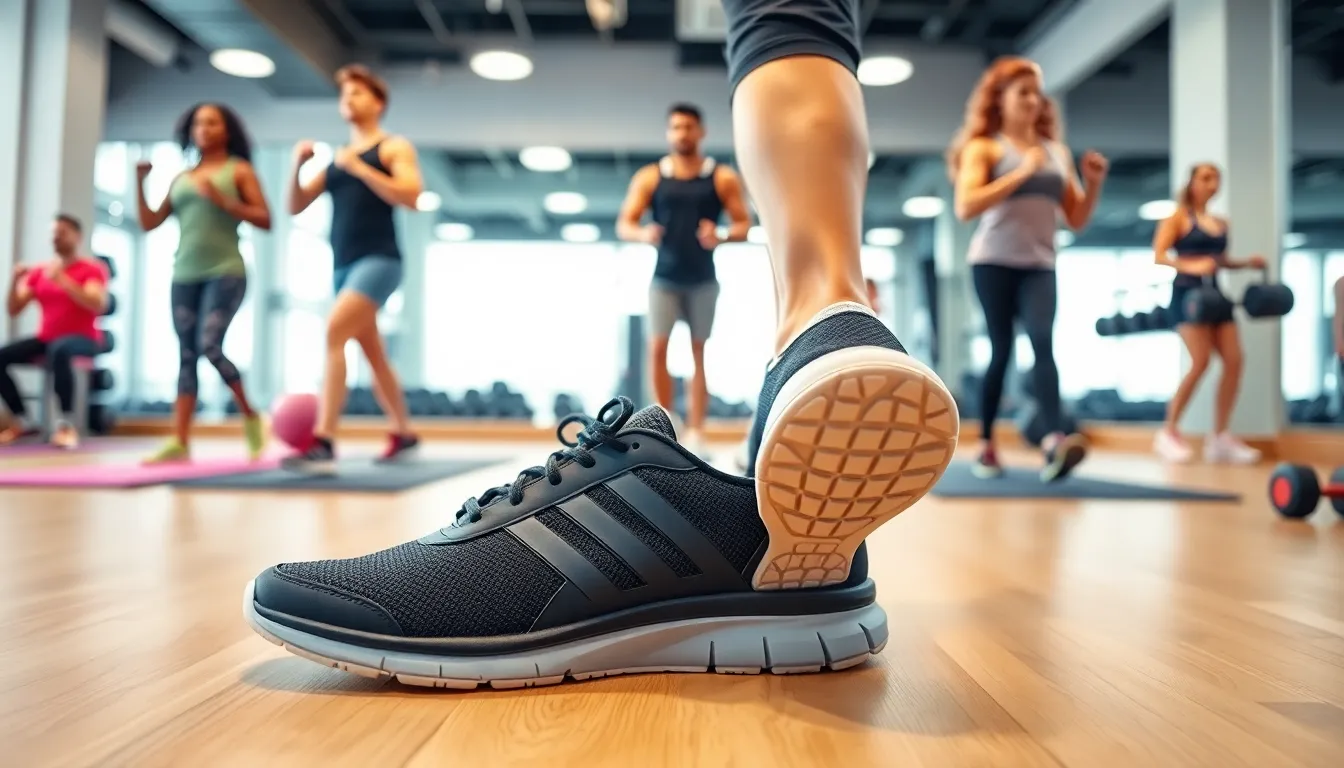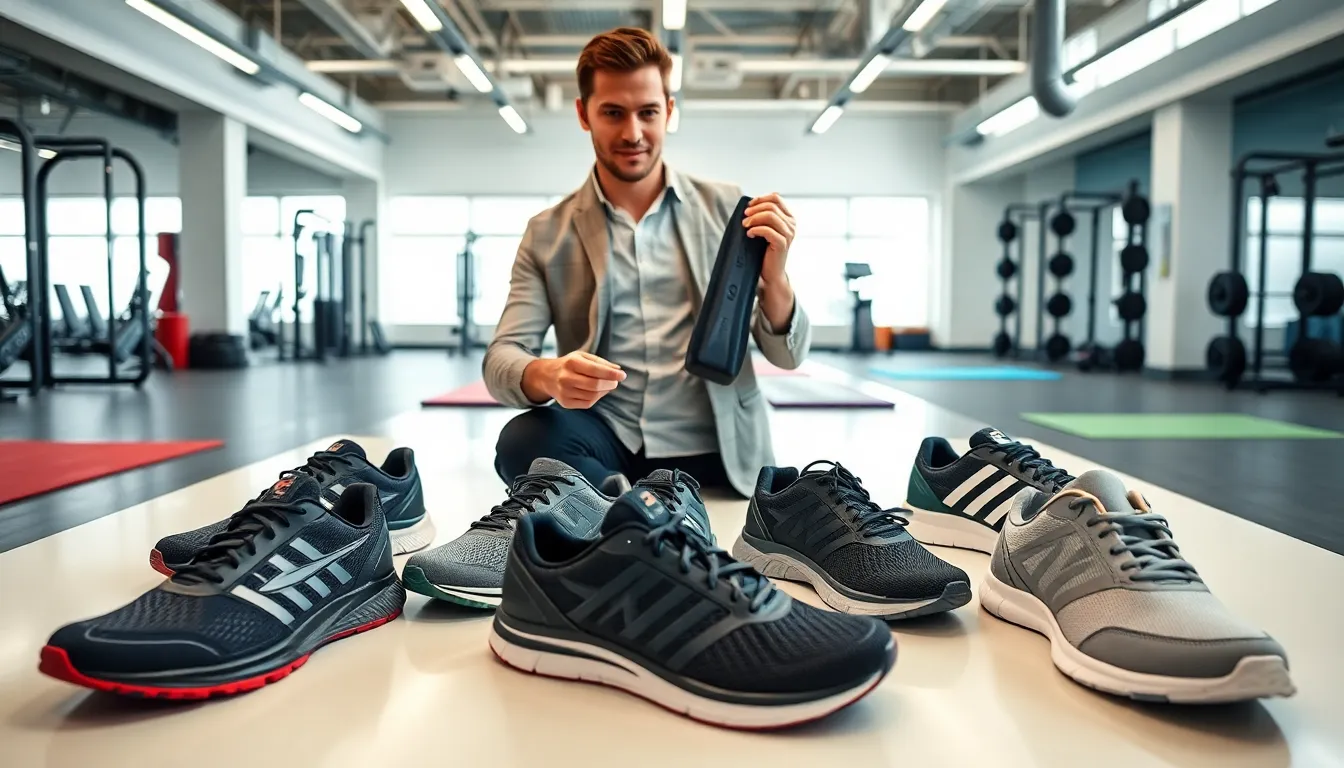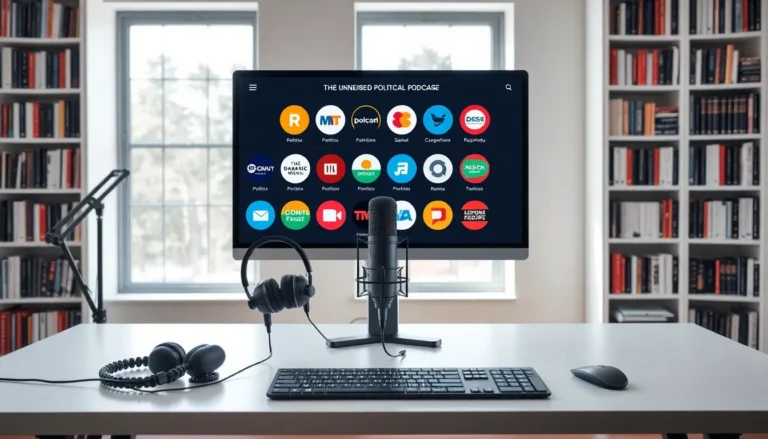When it comes to crushing your fitness goals, the right pair of shoes is your trusty sidekick. It’s like Batman having his utility belt, without the right gear, even the most committed trainees can find themselves stumbling. Choosing the perfect fitness training shoes can feel as daunting as a heavy squat session. Do you want lightweight freedom that lets you soar through your workouts, or something sturdier that stands the test of time? Fear not. Jump into this comprehensive guide as we break down everything you need to know about fitness training shoes. Get ready to make that perfect choice, and maybe even chuckle a bit as we journey together through the sole-ful world of fitness footwear.
Table of Contents
ToggleUnderstanding Fitness Training Shoes

Fitness training shoes are more than just fancy sneakers: they are meticulously designed footwear tailored to protect your feet during a variety of workouts. Whether it’s powerlifting, running, or HIIT training, these shoes provide essential support and stability. To truly comprehend what makes a training shoe distinct, one must first understand their purpose.
Unlike casual sneakers or running shoes, fitness training shoes often emphasize a flat sole that ensures maximum ground contact for better balance. The cushioning? It’s strategically placed, offering the right amount of support where needed while allowing for natural movements. If you’re wondering whether to grab a heel or a flat, remember, your workout demands may decide that for you. In essence, finding the right training shoe is akin to forging a solid foundation: everything else builds upon it.
Types of Fitness Training Shoes
When it comes to types of fitness training shoes, the marketplace is as varied as workout routines themselves. Here’s a breakdown of several key categories:
- Cross-Training Shoes: Designed for versatility, these shoes excel in offering support for various activities, from gym sessions to outdoor sports. Their tread pattern often accommodates lateral movements which are common in different workouts.
- Weightlifting Shoes: If strength training is your primary focus, these shoes are your best friend. They feature a raised heel and a rigid sole that helps keep your feet stable during heavy lifts, promoting proper form.
- Running Shoes: Although primarily built for running, some individuals opt for these to enhance their cardio sessions. They offer ample cushioning and arch support, making them suitable for longer workouts but less ideal for lateral movements.
- Barefoot Shoes: For those who lean towards a minimalistic approach, barefoot or minimalist shoes foster a closer connection with the ground. They promote natural foot movement but require some adaptation time.
- Court Shoes: Often overlooked, court shoes are essential for those who engage in basketball or tennis. Their design supports rapid directional changes and lateral movements, protecting the feet from unexpected twists.
Key Features to Look For
Not all fitness training shoes are created equal. When you’re equal parts pumped and confused in the shoe aisle, keep these key features in mind:
- Fit: Your shoes should hug your feet without pinching. Think of it as a friendly embrace, not a vice grip.
- Support: Look for ample arch and ankle support, especially if your workouts involve heavy lifting or jumping.
How to Choose the Right Pair
Choosing the right pair of fitness training shoes can significantly impact performance and comfort. Here’s a straightforward approach to ensure a perfect fit:
- Know Your Foot Type: Determine if you have high arches, normal arches, or flat feet. This will inform the type of support you’ll need from your shoes.
- Understand Your Activity: Consider what activities you’ll primarily be doing. Will you focus on weightlifting, running, or hybrid training? This decision will guide the shoe direction.
- Try Before You Buy: Never underestimate the power of a good fitting session. Walk, jog, or even leap around the store to assess comfort and fit.
- Consider the Terrain: If you’re training outdoors, factor in the type of surfaces you’ll encounter. Trail shoes might be better suited for rugged terrains.
Maintenance and Care for Your Training Shoes
Taking good care of your training shoes is crucial for extending their life. Here’s some expert advice:
- Clean Regularly: Dirt and grime can shorten the lifespan of your shoes. A gentle wash with soapy water and a soft brush can do wonders.
- Dry Properly: After a sweaty session, allow your shoes to dry naturally. Avoid direct sunlight, as heat can warp the materials.
- Rotate Shoes: If you train frequently, consider rotating between pairs. This gives each pair time to breathe and recover.
Top Brands for Fitness Training Shoes
The market is flooded with fitness training shoe brands, but a few stand out due to their innovation and performance:
- Nike: Known for their cutting-edge technology and design, Nike offers a wide range of shoes tailored to various training needs.
- Adidas: With a strong focus on comfort and support, Adidas is a popular choice among fitness enthusiasts.
- Reebok: Specializing in cross-training shoes, Reebok has earned a solid reputation for performance and durability.
- New Balance: Renowned for their cushioning and fit, New Balance caters to a broad spectrum of athletic activities.
- ASICS: Particularly known in the running community, ASICS also provides excellent training options.





